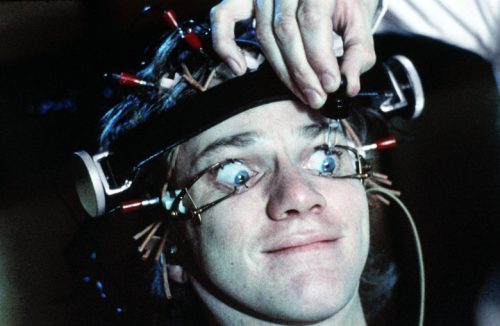No drama here. We all know that science and technology is the domain of cool heads, objective thought, and rational personalities, so this post is going to be a bit boring.
First up: the owner and founder of 8chan are locked in a bitter battle. The founder, Frederick Brennan, called the owner, Jim Watkins, some mean names, and he then replied in the manner of a true defender of Free Speech by siccing the government of the Philippines on him with an arrest warrant, threatening to put Brennan in prison for 10 years.
Watkins is pursuing Brennan under the Philippines Cybercrime Prevention Act. The law was enacted in 2012 despite outcry from rights groups and the United Nations, which warned that it was not in line with international norms. Amnesty International said that it “rolls back protection for free speech” and would have a “chilling effect” on speech in the country. It has most notably been used against journalist Maria Ressa in what the Committee to Protect Journalists labeled a “campaign of harassment.”
Yay Free Speech!
In other news…Twitter. That bastion of reasonable debate and discussion has gradually evolved to become an important arm of the government. Like Alexander Hamilton had the Federalist Papers, our current president has been calmly making arguments for a new way of communicating with the people via Twitter, and rich people have noticed. A billionaire, Paul Singer, is buying a sizable stake in the Twitter corporation, so that he can use his wealth to push Jack Dorsey around. The fact that he is a billionaire clearly informs us that he is competent and wise, so this can only improve the site. Money gives you the right to rule any aspect of the world you want to change.
Singer has even taken on whole countries: in 2016, after a relentless campaign, he secured a partial repayment of debts by Argentina, arising from its financial collapse in the early 2000s.
Maybe he’s going to give Twitter to The Donald as a Christmas present?
Speaking of Twitter, you know it has a policy of supporting anonymity, for good or ill, and banks away a lot of confidential information which you’re only supposed to see if you’re a wealthy capitalist who wants to advertise on the site. It turns out there’s another way: worm spies into the organization who will compromise security and sell information directly to their clients, like Saudi Arabia.
A week after returning to Twitter’s San Francisco headquarters, Abouammo logged into the system he used to verify users, according to the complaint. That system, sources who’ve accessed it told BuzzFeed News, stores information including email addresses, telephone numbers, and last log-in time — sufficient personal data to track down a user in real life.
Accessing two Saudi dissidents’ information — one a prominent critic with more than 1 million followers, the other an impersonator of a Saudi Royal family member — Abouammo allegedly passed the information to al-Asaker. Twitter had long been a godsend to dissidents: Unlike Facebook, it had no policy requiring people to use their real names, allowing critics of repressive government to speak more freely. The allegations threw its value as a tool of anonymous dissent into question.
Hey! No fair! You’re supposed to pay Twitter for those privacy breeches, not some random employee! You know I think Saudi Arabia could afford to pay through appropriate corporate channels and grease the right palms here.
There. I’ve had enough of the great minds behind our technological enterprises, I think I’ll sit here and just drink coffee for a while.






